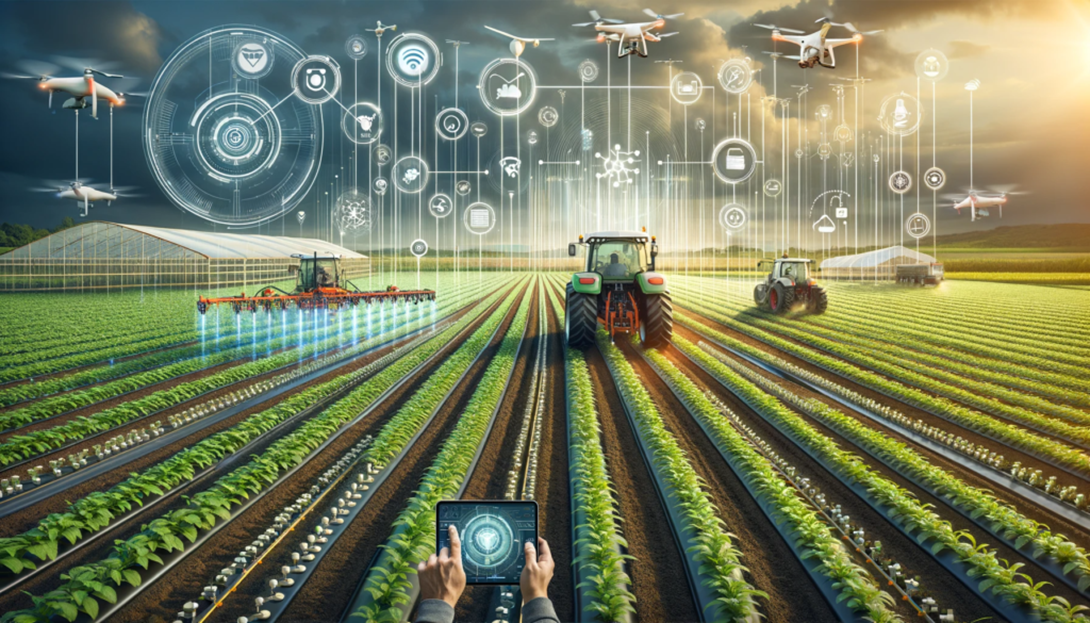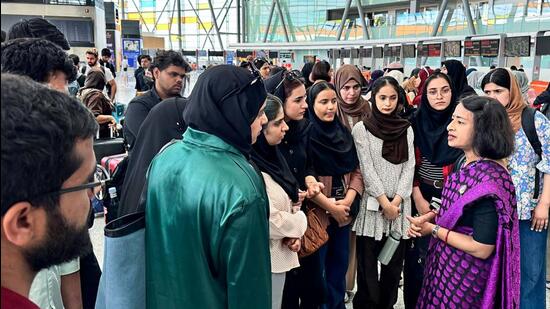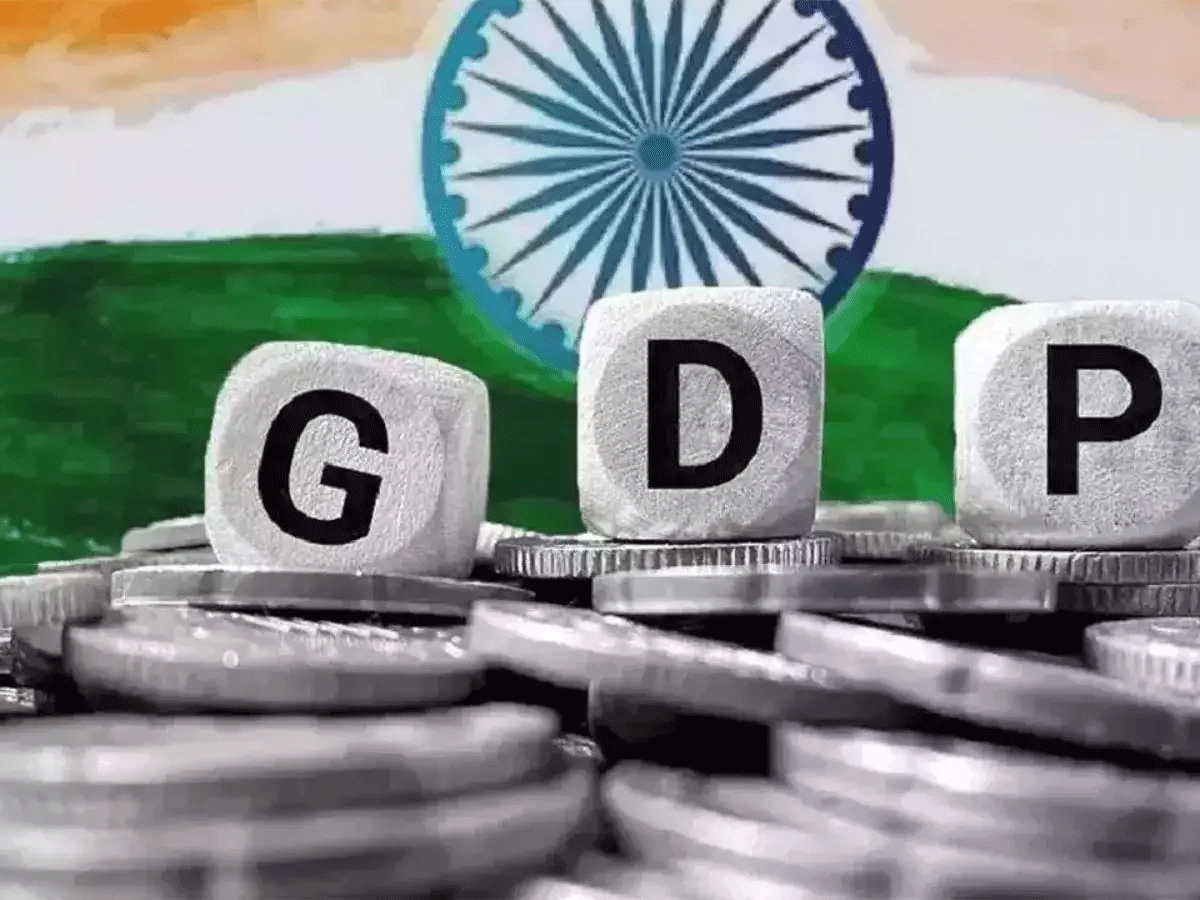- Courses
- GS Full Course 1 Year
- GS Full Course 2 Year
- GS Full Course 3 Year
- GS Full Course Till Selection
- Answer Alpha: Mains 2025 Mentorship
- MEP (Mains Enrichment Programme) Data, Facts
- Essay Target – 150+ Marks
- Online Program
- GS Recorded Course
- Polity
- Geography
- Economy
- Ancient, Medieval and Art & Culture AMAC
- Modern India, Post Independence & World History
- Environment
- Governance
- Science & Technology
- International Relations and Internal Security
- Disaster Management
- Ethics
- NCERT Current Affairs
- Indian Society and Social Issue
- NCERT- Science and Technology
- NCERT - Geography
- NCERT - Ancient History
- NCERT- World History
- NCERT Modern History
- CSAT
- 5 LAYERED ARJUNA Mentorship
- Public Administration Optional
- ABOUT US
- OUR TOPPERS
- TEST SERIES
- FREE STUDY MATERIAL
- VIDEOS
- CONTACT US
Revamping Crop Data Collection by E-Technology
Revamping Crop Data Collection by E-Technology

The Union government is pushing states to rapidly adopt and implement advanced digital initiatives to enhance agricultural data accuracy and farm production estimates. The focus is on the Digital General Crop Estimation Survey (DGCES), Digital Crop Survey, and the Revamped FASAL Programme.
Key New Initiatives:
-
Digital General Crop Estimation Survey (DGCES):
- Purpose: To improve the assessment of crop yields nationwide.
- Features:
- Mobile App & Web Portal: Facilitates efficient data collection and analysis.
- Crop Cutting Experiments: Scientifically designed to estimate yields for major crops.
- GPS-Enabled Photo Capture: Enhances data transparency and accuracy.
- Automated Plot Selection & Geo-Referencing: Ensures precise data collection.
-
Digital Crop Survey:
- Objective: To provide accurate, detailed crop data through digital means.
- Key Features:
- Geotagged Data: Records exact locations of crop plots for precise area measurement.
- Digital Documentation: Reduces reliance on manual methods.
- Real-Time Updates: Provides near real-time information on crop areas and conditions.
-
Revamped FASAL Programme:
- Purpose: To forecast agricultural output using advanced technologies.
- Technology Used:
- Remote Sensing: Generates accurate crop maps and area estimates.
- Mahalanobis National Crop Forecast Centre (MNCFC): Provides forecasts at district, state, and national levels.
-
Unified Portal for Agricultural Statistics (UPAg Portal):
- Function: Centralized hub for comprehensive agricultural statistics.
- Benefits:
- Real-Time Information: Includes data on crop production, market trends, and pricing.
- Cross-Verification: Ensures robust agricultural statistics through data integration.
-
Yield Forecast Model:
- Collaboration: Ministry of Agriculture & Farmers Welfare with institutions like the Space Application Centre and Indian Agricultural Research Institute.
- Purpose: Develop models to predict crop yields accurately.
-
Supervision Enhancements:
- Collaboration: Ministry of Agriculture & Farmers Welfare with the Ministry of Statistics and Programme Implementation.
- Focus: Increased supervision of crop-cutting experiments by the National Sample Survey Office.
Need for New Mechanisms:
-
Real-Time Monitoring:
- Problem: Traditional methods may lack timeliness for unexpected conditions.
- Solution: Digital tools offer real-time data, essential for quick interventions and accurate assessments.
-
Integration of Advanced Technologies:
- Issue: Outdated methods may limit effectiveness.
- Advantage: Digital tools provide geotagged, plot-level data, improving precision and efficiency.
-
Enhancing Data Reliability:
- Current Limitations: Manual data collection can be inconsistent.
- Improvement: Remote sensing and digital surveys enhance accuracy and reduce manual errors.
-
Facilitating Policy-Making:
- Need: Accurate data is crucial for effective resource allocation and policy decisions.
- Role: Digital initiatives assist in making informed decisions on Public Distribution System (PDS), food security, and other policy areas.
-
Addressing Climate Impacts:
- Challenge: Climate change affects crop production.
- Solution: Satellite imagery and other advanced technologies provide better data for adjusting farming practices and early warnings.
-
Handling Large-Scale Data:
- Scope: India’s diverse agricultural regions require efficient data handling.
- Benefit: Digital technologies simplify the estimation of crop production across vast areas.
Agriculture and Livestock Census:
- Agriculture Census:
- Conducted by: Ministry of Agriculture & Farmers Welfare.
- Frequency: Every five years.
- Guidelines: Based on the World Census of Agriculture (WCA) by FAO.
- Data Collection: Classified by size classes and social groups.
- Livestock Census:
- Conducted by: Ministry of Fisheries, Animal Husbandry & Dairying.
- Frequency: Every five years.
- Scope: Covers all domesticated animals.
- History: 20 censuses conducted since 1919-20, with the latest in 2019.
Challenges in Adoption:
- Lack of Digital Infrastructure:
- Problem: Insufficient storage and data processing infrastructure.
- Impact: Limits the effectiveness of digital technology in agriculture.
- Limited Access to Technology:
- Issue: Smallholder farmers often lack access to necessary tools and skills.
- Challenge: Restricts the adoption of digital methods and affects data generation.
- Data Accuracy and Reliability:
- Concerns: New technologies may face issues with data accuracy.
- Risk: Inaccurate data collection can lead to poor decision-making and decreased trust.
- Integration with Existing Systems:
- Challenge: New tools may not integrate smoothly with traditional systems.
- Complications: This can cause data management issues and inefficiencies.
- Language and Conversion Issues:
- Problem: Traditional data in regional languages may complicate digital integration.
- Solution: Need for effective translation and data management systems.
Way Forward:
- Improve Technical Skills:
- Actions: Partner with Krishi Vigyan Kendras (KVKs), NGOs, and tech companies.
- Methods: Offer training workshops, online courses, and practical demonstrations.
- Facilitate Integration with Existing Systems:
- Approach: Ensure compatibility between new technologies and traditional systems.
- Regular Audits and Validation:
- Process: Conduct periodic audits to check data accuracy and reliability.
- Goal: Identify discrepancies and ensure the robustness of data collection methods.
Conclusion:
The revamping of crop data collection through e-technology represents a significant leap towards modernizing agricultural statistics in India. By leveraging digital tools such as the DGCES and Digital Crop Survey, and utilizing advanced technologies like remote sensing under the FASAL Programme, the accuracy and timeliness of crop data can be greatly improved. These initiatives are essential for better policy-making, enhancing food security, and managing climate impacts on agriculture.
However, the successful implementation of these technologies faces several challenges, including the need for improved digital infrastructure, better access to technology for smallholder farmers, and integration with existing systems. Addressing these challenges through targeted training, infrastructure development, and regular data audits will be crucial for realizing the full potential of these digital innovations.
Overall, the shift towards digital methods in crop data collection is a positive step that promises to make agricultural data more reliable and actionable, ultimately benefiting farmers, policymakers, and the broader economy.
Must Check: Best IAS Coaching In Delhi
UPSC Prelims Result 2024 Out: Expected Cut Off & Other Details, UPSC Prelims 2024 Answer with Explanation, Daily Prelims Quiz, Daily Current Affairs, MONTHLY CURRENT AFFAIRS TOTAL (CAT) MAGAZINE, Best IAS Coaching Institute in Karol Bagh, Best IAS Coaching Institute in Delhi, Daily Mains Question Answer Practice, ENSURE IAS UPSC Toppers, UPSC Toppers Marksheet, Previous Year Interview Questions, UPSC Syllabus




